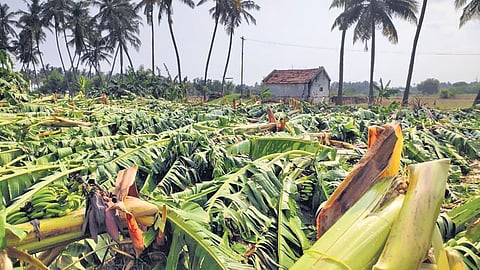

HYDERABAD: India’s efforts at climate change adaptation have been on since two decades, which has made us better prepared for the vagaries of the monsoon, claimed Dr V K Singh, Director of Crops Research Institute for Dryland Agriculture (CRIDA), established by the Indian Council of Agricultural Research.
Climate change, he said, can be treated as one of the causative factors and not the sole reason for the weather aberrations, though the frequency of such adverse events has increased. In an exclusive interview with TNIE, Singh said this is “the New India”, which is better off than many countries in dealing with extreme weather. For example, 40% of paddy varieties being grown in the country at present are climate resilient, he said.
“There are many climate resilient varieties which have been developed, including those that can cope with heat stress and also those that can withstand submergence. We have even developed herbicide-tolerant varieties to address weed infestation,” he added.
Despite the monsoon mayhem, the overall production and profitability has been good; seeds, machines and fertilisers have been made available; infrastructure and ground management practices have improved; and water availability has increased. In 2012, CRIDA found 310 districts to be at high risk due to climate change, and made recommendations for particular soil types and crops for various agricultural clusters there. In 2012, after years of research, CRIDA had found 310 districts to be at high risk due to climate change, and made recommendations for particular soil types and crops for various agricultural clusters there. Recently, CRIDA’s scientists sensitised nine states on what to be done during extreme weather events in the present Kharif season.
“Our research story of National Institute for Climate Resilient Agriculture has been replicated by Maharashtra in its Project on Climate Resilient Agriculture programme and also by Bihar,” he noted. Singh said among the different technologies for climate adaptation, many are input intensive.
Though appreciating the alternative wetting and drying method, and direct seeding of paddy being done
by some farmers as something which could reduce methane emissions, he agreed that the direct seeding is machine-intensive, which is why farmers haven’t fully adopted it.
He also said that neem-coating of urea has considerably reduced greenhouse gas emissions, as their release is slowed down.
Observing that India still has a long way to go on predicting weather at the village and farm level, he pointed out that not all districts of the country have weather observatories. He said there is a need for more accurate weather forecasting.